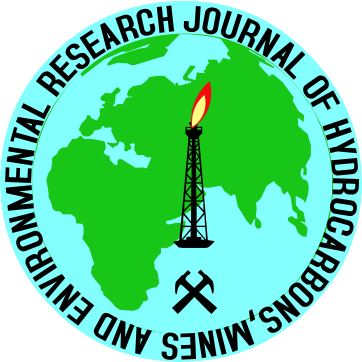JOURNAL OF HYDROCARBONS MINES
AND ENVIRONMENTAL RESEARCH
__________________
 |
©
Journal of Hydrocarbons Mines and Environmental Research, ISSN: 2107-6510,
Volume 1, Issue 1, June 2010, 14-25 __________________________________________________________________________________________________ |
Neotectonic evolution of the Eastern Tunisian platform
from paleostress reconstruction
Raouf Ghribi* and Samir Bouaziz
University of Sfax, National Engineering School of Sfax, L.R.
AD-10-02, B.P. W.3038, Sfax,Tunisia
* corresponding author: ghribiraouf@yahoo.fr (R. Ghribi)
Received: 24 April 2010 - Accepted after revision:
28 June 2010 - Available online: 30 September 2010
Abstract: The eastern Tunisian platform (Tunisian
Sahel), occupying the biggest part of the Tunisian coastal fringe, is characterized
by NE-SW oriented folds separated by collapsed plains. These structures, resulting
in irregular topography, are abruptly cut up by many major faults N-S, NE-SW
and NW-SE oriented, creating tilted blocks. The fault population, cross-cutting
the Mio-Plio-Quaternary sequences, allows us to determine the stress axes.
A succession of tectonic events is proposed: (1) A NE-SW Mio-Pliocene extension
creates NW-SE to E-W subsiding basins that receive 200-300 m thick Messinian
layers; (2) A N160°-180° post-Villafranchian compressional event from
the Early Pleistocene age is responsible for the tilting in the calcareous
crust as well as the reactivation of the pre-existing structures; (3) A NNE-SSW
transpressional regime corresponding to reverse and strike-slip fault population
may have affected the Late Pleistocene “Tyrrhenian” marine deposits.
These successive tectonic events allowed the correlation of the main Mio-Plio-Quaternary
events observed in the adjacent domains (Italy, Algeria and Morocco). The
seismic activity reflects the present-day convergence between the African
and European plates.
Keywords: Tunisian Sahel, Mio-Plio-Quaternary,
neotectonic, paleostress reconstruction, western Mediterranean
Evolution néotectonique de la plateforme orientale tunisienne à partir de reconstitution des paléocontraintes
Résumé: L’analyse
détaillée des populations de failles enregistrées dans
la série mio-plio-quaternaire du Sahel tunisien suggère une
succession d’événements tectoniques : (1) une extension
NE-SW syn-dépôt du Mio-Pliocène a donné naissance
à des bassins subsidents comblés par une puissante série
messinienne ; (2) une compression post-villafranchienne (Pléistocène
inférieur) orientée N160° responsable du basculement de
la croûte calcaire tapissant les anticlinaux plurikilométriques
du Sahel tunisien ; (3) une compression NNE-SSW post-tyrrhénienne se
traduit par des failles inverses et de décrochement affectant les dépôts
marins du “Tyrrhénien”. L’évolution structurale
du Sahel tunisien s’intègre parfaitement dans l’histoire
géodynamique de la Méditerranée occidentale (Maroc, Algérie
et Italie) en relation avec la cinématique des plaques africaine et
européenne. L’activité sismique actuelle du Sahel tunisien
traduit la poursuite de la convergence des plaques africaine et européenne.
Mots clés: Sahel tunisien,
Mio-plio-quaternaire, néotectonique, reconstitution des paléocontraintes,
Méditerranée occidentale